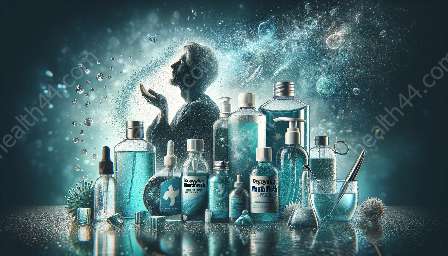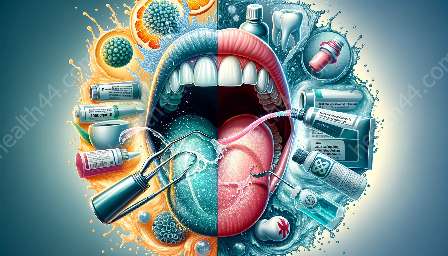When it comes to maintaining good oral hygiene, mouthwash plays a significant role. Many people use mouthwash as a part of their daily oral care routine to freshen their breath, kill bacteria, and promote overall oral health. Have you ever wondered what makes up mouthwash and why it's effective?
Let's explore the common ingredients found in mouthwash and understand their roles in keeping our mouths clean and healthy.
1. Antimicrobial Agents
One of the primary functions of mouthwash is to kill germs and bacteria in the mouth. Antimicrobial agents, such as essential oils (like eucalyptol, thymol, menthol, and methyl salicylate), cetylpyridinium chloride, and chlorhexidine, are commonly used in mouthwash to provide this antibacterial action. These ingredients help reduce plaque and fight bad breath-causing bacteria.
2. Fluoride
Fluoride is a mineral that helps prevent tooth decay and strengthens tooth enamel. Many mouthwashes contain fluoride to protect against cavities and maintain oral health. Fluoride rinses are especially beneficial for individuals at a higher risk of developing cavities.
3. Alcohol
Alcohol, typically in the form of ethanol, is included in some mouthwashes as an antiseptic agent. It helps to kill bacteria and provide a refreshing sensation, leaving the mouth feeling clean and invigorated. However, some individuals may prefer alcohol-free mouthwash due to its potential to cause dryness and irritation.
4. Humectants and Sweeteners
Mouthwashes often contain humectants, such as glycerin and sorbitol, to prevent the mouth from drying out after use. Additionally, sweeteners like saccharin or xylitol are used to improve the taste of the mouthwash, making it more palatable for users.
5. Detergents
Surfactants and detergents, such as sodium lauryl sulfate (SLS), are added to mouthwash formulations to help disperse the ingredients, create a foaming action, and aid in the removal of food particles and debris from the mouth. These components contribute to the cleansing effect of mouthwash.
6. Water and Flavoring Agents
Water serves as the base of most mouthwash solutions, while flavoring agents, such as menthol or peppermint oil, are added to enhance the taste and leave a fresh, pleasant sensation in the mouth.
7. pH Adjusters
Some mouthwashes contain pH adjusters, like citric acid or sodium hydroxide, to ensure that the product maintains a proper pH level. This helps to create an environment in which bacteria have difficulty thriving, thus contributing to a healthier oral environment.
8. Preservatives
To maintain the shelf life of mouthwash and prevent bacterial contamination, preservatives like methylparaben and sodium benzoate are often included in mouthwash formulations.
Conclusion
Mouthwash is a valuable addition to an oral care routine, and understanding the common ingredients it contains can help individuals make informed choices about which products are best suited for their specific needs. Whether you're using mouthwash to freshen your breath, kill bacteria, or maintain oral health, being aware of the ingredients can enhance the effectiveness of your oral hygiene regimen.
By selecting a mouthwash that aligns with your oral health goals and preferences, you can reap the benefits of its antimicrobial agents, fluoride, alcohol content, humectants, and other components that work together to promote a healthy and clean mouth.









